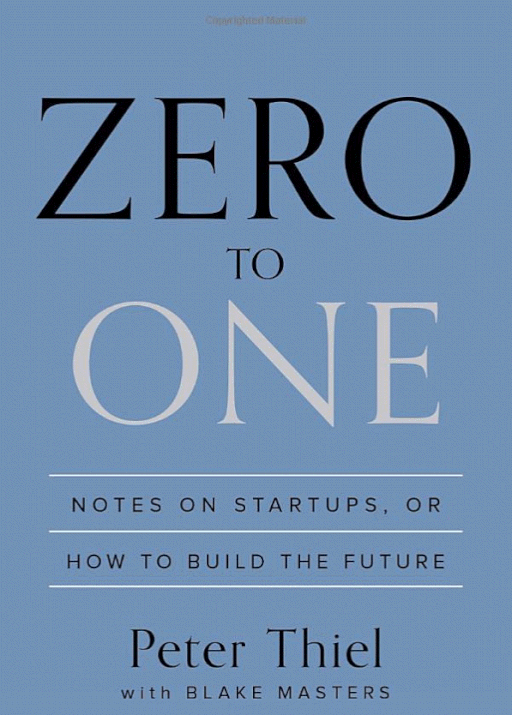Intelligent Design Is Not What Most People Think It Is
Widespread confusion about Intelligent Design leads us to address the question: What exactly is it?When I tell people that I do work in Intelligent Design (ID) research, either the person I’m talking to has no idea what Intelligent Design is, or they have quite a faulty idea of what Intelligent Design is. This isn’t their fault — media reports don’t seem to be able to make sense of what we are doing either. Some people have attributed this to malice, and, while I’m sure there’s plenty of that to go around, I think that it is in large part actually the result of Intelligent Design doing something genuinely new, making it difficult for people to shove us into existing boxes.
Intelligent Design, at its core, says that agency is a distinct causal category in the world. That is, when I code a computer program, write a book, invent a formula, write a poem, etc., I am doing something that is distinctively beyond the operation of pure physics. There is something distinct about the way that causation works for beings with minds compared to how it works for beings without minds. This might sound like an abstract philosophical concept, but it actually has pretty radical (and practical) results.
Intelligent Design, at its core, says that agency is a distinct causal category in the world.
Intelligent Design in Business and Technology

The business applications of Intelligent Design were put forth by Peter Thiel in his book Zero to One. There, specifically invoking Intelligent Design theory, he demonstrated what sets apart businesses that move markets — they generate new truths that are not algorithmically deducible. Thiel shows that the mind has unique powers which are not reducible to mechanism, and that by focusing our efforts in the direction that our minds are specially built for allows us to create more economic prosperity. Thiel puts it like this:
computers are far more different from people than any two people are different from each other; men and machines are good at fundamentally different things. People have intentionality – we form plans and make decisions in complicated situations. We’re less good at making sense of enormous amounts of data. Computers are exactly the opposite: they excel at efficient data processing, but they struggle to make basic judgments that would be simple for any human. . . .
In 2012, one of [Google’s] supercomputers made headlines when, after scanning 10 million thumbnails of YouTube videos, it learned to identify a cat with 75% accuracy. That seems impressive – until you remember that an average four-year-old can do it flawlessly. When a cheap laptop beats the smartest mathematicians at some tasks but even a supercomputer with 16,000 CPUs can’t beat a child at others, you can tell that humans and computers are not just more or less powerful than each other – they are categorically different. (pgs 143-144)
Researching and clarifying the distinction between the things that minds can do compared to computers is a core aspect of Intelligent Design, and has practical results.
Many people unwittingly use this distinction without recognizing the underlying theory. In Artificial Intelligence, the training data is generally tagged and labeled by humans (sometimes without their knowledge). At Google, their core technologies essentially harvest the intentionality of their users. Amazon Web Services has an entire service built around moving computational tasks to humans when they are better served by minds instead of machines.
Other people would do well to avail themselves of Intelligent Design theory. Elon Musk, despite his impressive ability to build inspiring businesses as a serial entrepreneur, is hampered by continually making mistakes about the mind and its relationship to machines. Likewise, having ignored Intelligent Design for decades, molecular biologists have bungled the question of the origin of COVID by misunderstanding the logical basis of design inferences.
Intelligent Design in Biology
Where Intelligent Design is most well-known is in the area of biology, where it often gets confused with creationism. Let me be clear — I am in fact a creationist myself, which is precisely why I know that it is distinct from Intelligent Design. The problem with the label “Intelligent Design Creationist” that many throw around isn’t that there aren’t people who genuinely fit this label (like myself) but rather that it confuses distinct concepts. It is like the term “evolutionary atheist.” There are indeed people to whom this term applies, but it is a complete misunderstanding to apply it to evolutionary theory (and its practitioners) as a whole. Even most evolutionary biologists who are atheists are careful to distinguish the two, just as most practitioners of Intelligent Design who are creationists do the same.
Intelligent Design, as presently applied to biology, is primarily about detecting and measuring design. Now, it is a matter of logic that, even if you can determine that something was designed, it doesn’t follow that you also know where, how, and by whom it was designed. We can see clearly that Stonehenge was designed, and we identified that long before we identified which civilization built it or even what its function was. Intelligent Design looks at organisms to see which (if any) of its features give evidence of having a mind in the causal chain.
Most people mistake this for anti-evolutionism. While most anti-evolutionists would agree in general terms with Intelligent Design, the converse is not necessarily the case. The fact that we can detect that intelligence existed in the causal chain does not mean that the influence of that intelligence was direct or immediate.
To understand this, imagine your computer. Computers usually come with a robust operating system that has all sorts of programs. My Mac comes with a text editor, a control panel, the Finder, a Preview program, and the Quicktime media player. These all show evidence of Intelligent Design. However, these programs, while all showing evidence of Intelligent Design, all actually came from a single common ancestor — the installer program for the operating system. These programs didn’t evolve by random mutation and natural selection — on the contrary, they were built into the design of the original installer. Additionally, not all installations are the same. If your computer doesn’t need certain drivers, then the installer might not have copied them into your computer. The installer probably adjusted various configuration files to match the environment that it got installed into. However, the process was information-rich rather than information-poor.
As you can see, there is nothing logically incompatible between evolution from a common ancestor and Intelligent Design — it’s just that such an evolutionary process is radically different from the common conception of evolution. Intelligent Design-based evolution starts with large amounts of information already available rather than trying to formulate a theory that gets you information from nothing. From perpetual motion machines to Darwinism, something-from-nothing theories have tended to always be problematic in science, giving the allure of wisdom but ultimately coming up empty.
That also doesn’t mean that Intelligent Design requires an evolutionary process. If I were to program, build, and install a new piece of software onto the computer, you would not be able to tell after-the-fact whether this program came from the installer or if I had separately created it. However, the lack of ability to know the history of the program doesn’t preclude you from detecting its design. It just means that determining the history of a program requires a different methodology than the one provided by Intelligent Design.
Additionally, there are mixes. There are programs whose result includes the products of history, randomness, and other things associated with evolution. Intelligent Design does not say that these things don’t exist or that they can’t exist in organisms. What it does do is give us tools to figure out which pieces require intelligence in their causal chain. This has practical consequences. In conservation, knowing which aspects of organisms can come from history compared to those than must come from design can allow us to better direct our resources at preservation. Preserving a design element in nature is more important in the long term than sentimentality over cuddly animals.
Intelligent Design is not what most people think it is. The mistake is understandable because, for people who are stuck in old ways of thinking, it can sound like creationism. However, the theory and application of Intelligent Design approaches a different question than who, what, where, when, or by what means something is designed, and takes a look at the logic and nature of design itself. Approaching the problem in this way leads to applications that go far beyond biology and into computer science, business, economics, and other areas of inquiry and application.
